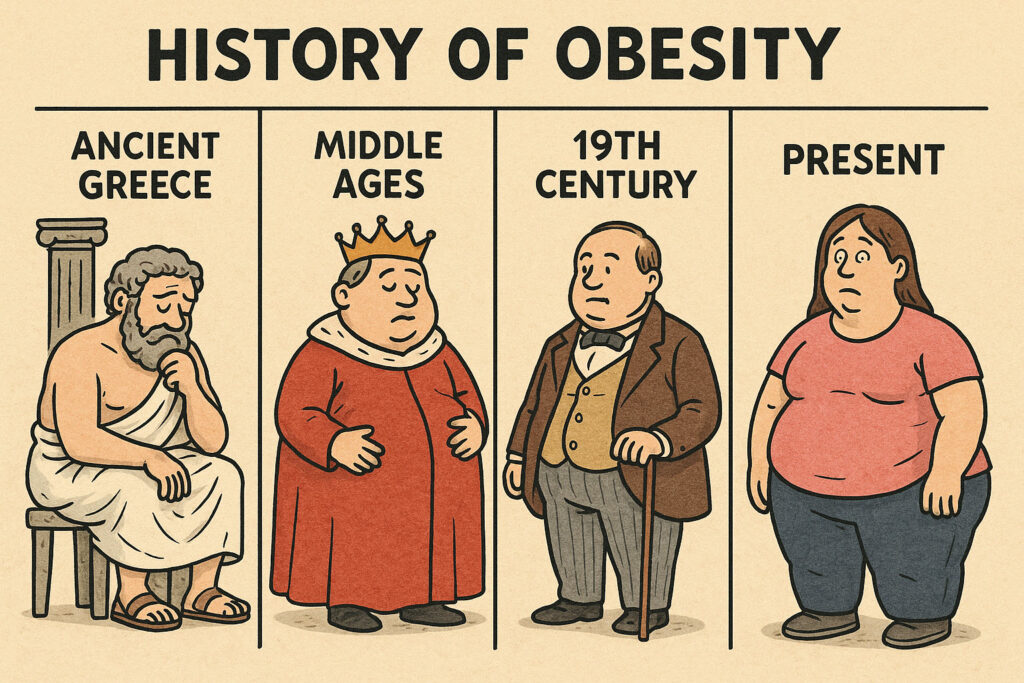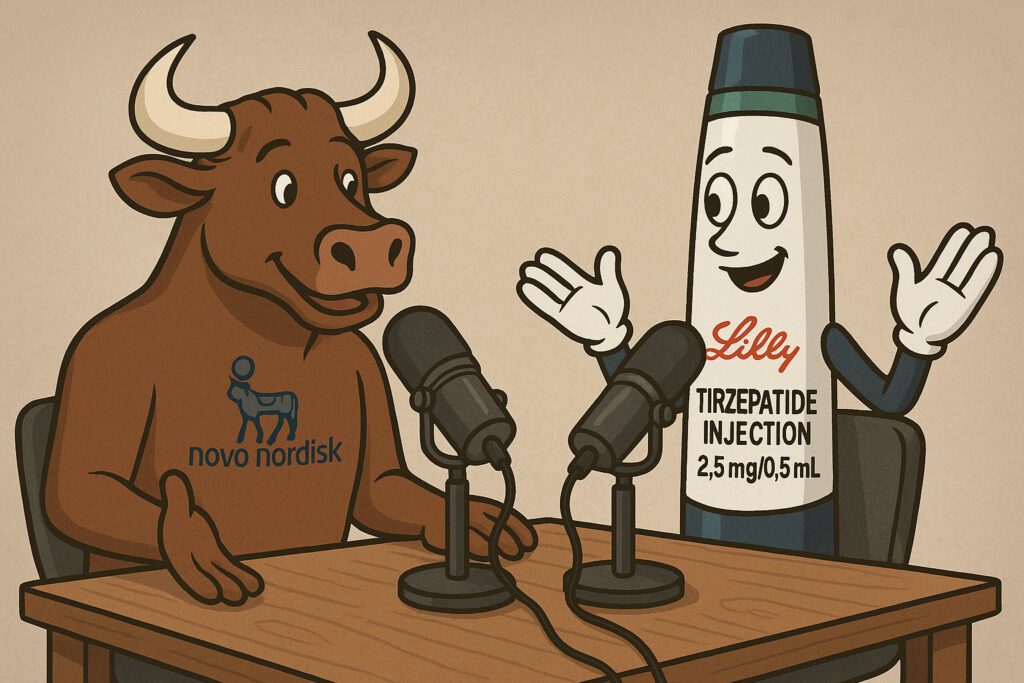The provided text offers a comprehensive overview of how obesity has been understood and depicted across different historical periods, from ancient civilizations to the present day. It traces the evolution of obesity from being a symbol of wealth or a moral failing to its current recognition as a complex medical condition influenced by genetics, environment, and socioeconomic factors. The document highlights key shifts in medical understanding, the emergence of dieting, the introduction of metrics like BMI, and significant cultural portrayals in literature and art, demonstrating a continuously changing societal perspective on body weight and health.

The history of obesity, both as a medical condition and in literature, is rich and multifaceted. Obesity has been present throughout human history, but it has been understood and portrayed in varying ways depending on cultural, social, and medical perspectives. Below is a timeline and a brief look at how obesity has evolved in the literature and medical fields.
Timeline of Obesity’s History
Ancient Times (Pre-500 AD)
Ancient Greece & Rome: Obesity was seen as a sign of wealth and indulgence in some cultures. Philosophers such as Hippocrates (460–370 BC) acknowledged that excessive body weight could have negative effects on health but still viewed it as a matter of excess pleasure, particularly among the upper classes.
Roman Empire: Roman writers like Juvenal satirized the excesses of wealthy individuals, linking obesity with gluttony. Some Roman physicians, including Galen, believed that an imbalance of bodily humors caused obesity.
Medieval Period (500–1500 AD)
Religious and Cultural Views: Obesity during this time was less frequently discussed in medical texts but was often linked to overindulgence in food, a vice associated with the sin of gluttony. In Christian theology, excess body weight was often portrayed as a spiritual failing.
Social Structure: The medieval period largely saw obesity as a marker of social class, with the wealthy able to afford abundant food.
Early Modern Period (1500–1800 AD)
Renaissance Era: Artists like Peter Paul Rubens depicted women with fuller figures, often portraying them as symbols of fertility and beauty. Obesity was still associated with affluence.
Scientific Revolution: Early studies began to emerge about the role of diet and exercise in maintaining health, but obesity was still not treated as a medical disorder in the modern sense. The idea that overeating could cause disease started to gain traction.
19th Century
Industrial Revolution: With the rise of the industrial era and urbanization, a more standardized approach to diet and physical activity began to emerge. People from lower social classes, who had less access to food, were often leaner, and obesity became increasingly associated with the wealthy.
Medical Understanding of Obesity: In the late 1800s, Sir William Banting, an English undertaker, published a pamphlet titled “Letter on Corpulence”, which outlined his personal weight loss regimen. This marks one of the first attempts at a systematic approach to dieting, sparking interest in reducing weight through calorie restriction.
20th Century
1920s–1940s: Obesity was more widely recognized in medical literature as a health problem. During this time, the concept of “obesity as a disease” started to take hold. The term “obesity” itself gained medical and social significance.
1950s–1970s: With the rise of consumer culture and mass media, obesity became a popular topic in both medical and popular literature. Weight loss became an industry, with products like weight loss pills and exercise equipment emerging.
1970s–1980s: Obesity continued to be seen as a medical problem, with research focusing on the metabolic and hormonal factors that contribute to weight gain. Obesity rates began to rise significantly during this period, leading to greater public awareness.
1972: The term Body Mass Index (BMI) was introduced by Adolphe Quetelet, which became a widely used metric for determining obesity based on weight and height. However, BMI was a somewhat controversial measure, as it does not account for muscle mass or fat distribution.
Late 20th Century to Present
1990s–2000s: The World Health Organization (WHO) declared obesity a global epidemic in 1997. In the 2000s, the obesity epidemic became a central focus in public health literature.
2010s-Present: The focus on obesity shifted from purely personal responsibility to a more nuanced understanding, including the influence of genetics, the environment, and socioeconomic factors. The rise of GLP-1 agonists and other pharmacological treatments for obesity furthered scientific research in metabolic health.
Cultural Representation: The portrayal of obesity in literature became more varied. Some authors criticized societal beauty standards, while others began to explore the psychological effects of obesity on individuals. Books like “The Obesity Epidemic” by Roberta Redford and “Fat: The Anthropology of an Obsession” by Sander L. Gilman became central works discussing the socio-cultural and health aspects of obesity.
Key Literary Works on Obesity
“The Picture of Dorian Gray” (1890) by Oscar Wilde: Wilde’s portrayal of vanity and the pursuit of physical perfection touches on themes related to body image and the perception of physical health, indirectly referencing obesity as a manifestation of indulgence.
“The Fat Girl” by Mary Frances Kennedy Fisher (1959): This work delves into the cultural implications of weight and how society perceives those who do not meet physical beauty standards.
“The Hunger Games” by Suzanne Collins (2008): The dystopian series touches on themes of body image, food scarcity, and the societal implications of body weight, exploring a world where food consumption is highly controlled.
The Modern Conversation
Social Media & Body Positivity: In the 21st century, the conversation about obesity and body image has become more inclusive. Social movements like Body Positivity have challenged traditional beauty standards, focusing on the acceptance of all body types. However, the debate between health and aesthetics continues in both popular and medical literature.
Scientific Literature: Today, obesity is primarily studied in the context of metabolic syndrome, diabetes, and heart disease. Modern research examines the genetics of obesity, its hormonal underpinnings, and its environmental contributors, emphasizing the complex interplay between biology and society.
Obesity in literature has evolved from a symbol of excess and indulgence to a more complex societal issue that reflects our changing attitudes toward health, body image, and social inequality.
Audio Overview (Google NotebookLM)
(20 minutes 30 seconds)

